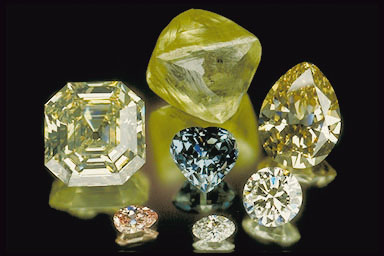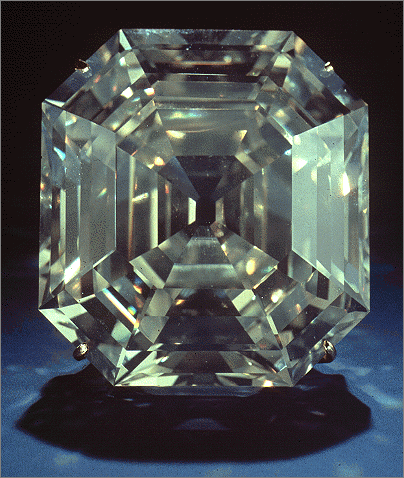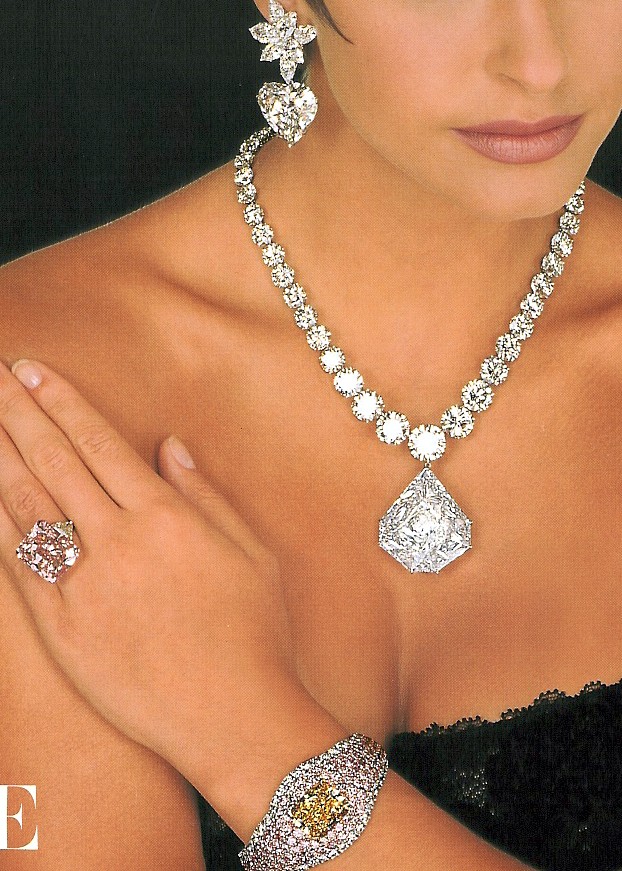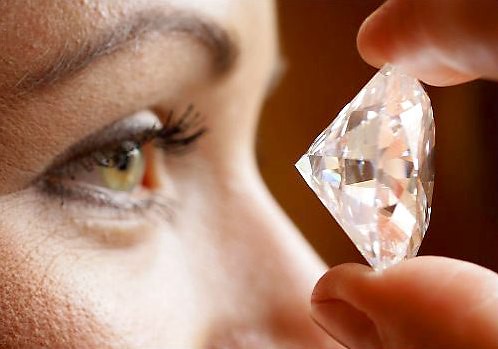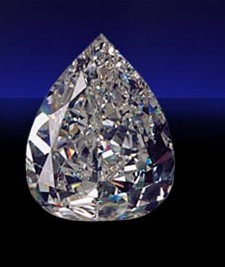History of Nizam Diamond

History, Past and Present--Suggestive Contrasts--What a Jewel might have Seen--Supposed Value of the Nizam Diamond--Its Shape and Appearance--The Stone is Broken during the Indian Mutiny--Strange Powers Supposed to Belong to the Gem--Possibilities in the History of the Nizam.
There are few great secrets kept from the ken of the modern historian, who writes down the events of the time for the newspaper Press. A precious stone of more than usual importance sees the light to-day, and to-morrow its advent is proclaimed to all the world. Thereafter due chronicles are kept of its travels and adventures. Its comings and goings are noted as matter of universal interest. We may not be informed of the varied intrigues in which it is a factor, but it is on record, it is cataloged in the world's museum of treasures; the "bull's-eye of the Press" has been turned upon it; the opinions of Queens and Emperors in regard to it are registered, as well as the judgment of experts and scientists; in short it belongs to history.

Moons of Mountain Nizam Diamond
A nagging doubt has begun to creep among the heritage enthusiasts. Are our museums in India, safe enough for displaying these priceless treasures?. Insuring this heirlooms is impossible, for even at the proverbial one per cent, the premium would be more than 20 crore or more than what we spent on the National Museum annually. In 1998, a theft worth millions of rupees took place in the Rashtrapati Bhavan, the home of the President of India, arguably the most guarded mansion in a museum-which had been set up by the former President R. Venkataraman in the 1980s to display the various fabulous gifts given to the Presidents of India since 1950 and to house the treasures of carpets/dinner services left by the British in 1947. Some thieves had removed centuries-old antiques from the Rashtrapati Bhavan.

Nizam Mir Mahbub Ali Khan
In singular contrast to all this are the hazy accounts which have come down to us concerning the first appearance, and the subsequent vicissitudes of the great gems of old. Created amidst commotions of nature, of an intensity beyond imagination, they have in historic ages often burst upon the knowledge of Europeans in the lesser commotions of human life. War and famine, civil strife, and pestilence have alike contributed to rescue from comparative oblivion some precious stone. It has been eloquently remarked, "A jewel may rest on an English lady's arm that saw Alaric sack Rome, and beheld before-what not? The treasures of the palaces of the Pharaohs and of Darius, or the camp of the Ptolemies, come into Europe on the neck of a vulgar pro-consul's wife, to glitter at every gladiator's butchery in the amphitheatre; then pass in a Gothic ox waggon to an Arab seraglio at Seville; and so back to its native India, to figure in the peacock throne of the Great Mogul; to be bought by an Armenian for a few rupees from an English soldier; and so at last come hither." The romancist or the poet may seek in vain for the inspiration of more startling events than the possible adventures and the known incidents that belong to the history of precious stones and gems.
The King of Golconda possesses a magnificent stone in the rough state. It is known by the name of the Nizam, weighs 340 carats, and is valued at 5,000,000 francs" (pound 200,000). For "the King of Golconda," a title which has long been obsolete, though still flourishing in French literature, we should here read, "the Nizam of Hyderabad." This prince, who is the most powerful semi-independent ruler in the Deccan, is a lineal descendant of the former Mogul Viceroy of Golconda, and in his territory are situated the famous diamond-fields popularly known as the Golconda mines. Of these mines, the Kollur, on the river Kistna, was the most productive, and was especially noted for the unusually large crystals yielded by it. Here was undoubtedly found the Great Mogul, and here also, in all probability, was discovered that stone now known as the Nizam, from the official title of its princely owner.
Little importance can be attached to the statement that this remarkable crystal is valued at pound 200,000; for it is still in the rough state. The necessary process of reduction is well-known to be always attended with more or less risk, so that the most skilled expert would scarcely hazard his reputation by venturing an opinion on the intrinsic character of a rough diamond before it has been manipulated by the cutter and polisher. In the hands of the cutter many unsuspected blemishes are often revealed, which require the diamond to be greatly reduced in size, or even cleaved into several pieces. But the Nizam has a good reputation, and it is probable that it might be advantageously cut without sacrificing more than one half of its present weight. Viz., 340 carats. In that case it would still rank with the very largest gems on record.
King describes it as, "somewhat almond-shaped, almost in its native condition, although it seems to exhibit some traces of an attempt to shape it into the mystic Yoni, probably with the intention of it being placed, as her usual attribute, in the land of Parvati, the goddess of generation. In the cast from it, which I have examined, the ineffectual attempts of the Hindu lapidary to work the obdurate material to his fancy are extremely curious." Then he adds, "This stone was by some very ominous accident broken asunder in the year of the great Indian revolt. Weight 340 carats." But he does not say whether this weight refers to its size before or after its breakage.
Faithful's gives its estimated value at pound 200,000, and it has been stated that its original weight, before being fractured, was no less than 440 carats. If so it was the largest genuine diamond ever discovered except the Great Mogul, and it is remarkable that both of these enormous specimens came apparently from the same rich diamantiferous district of Kollur in the Kistna Valley. It is quite possible that the breaking of the stone, accidental or otherwise, regarded as an omen of trouble, may have had its influence on historical events; for not only uncivilized and Oriental potentates, but Christian kings and learned men have given to precious stones wonderful powers. In mediaeval days carbuncles were credited with an influence on poisons; jasper was believed to cure fevers; agate ministered to defective eye-sight; and carnelian stopped hoemorrhage. Juvenal records of a ring, belonging to Cicero that it endowed him with eloquence; and Edward the Confessor had a ring which was believed to cure epilepsy. It seems, however, to be the especial privilege of the diamond in affairs of love to have an influence only second to that of the fabled Cupid himself. What part the Nizam may have played in the intrigues and passions of Courts and peoples the present historian knoweth not; and as it is his purpose to adhere as far as possible to mere facts, without, however, setting aside tradition, he must leave to the imagination of the reader the possibilities of adventure which are suggested by the blanks that are left, wide and deep, in the history of the Nizam
![]()
 The first documented case of a cut diamond being worn by a woman dates back to the XVth Century and involves a natural color diamond: Agnès Sorel, the official mistress of Charles VII, wore a pink diamond. Perhaps as a sign of what the future would bring, she was also the first non-noble woman to wear a diamond.
The first documented case of a cut diamond being worn by a woman dates back to the XVth Century and involves a natural color diamond: Agnès Sorel, the official mistress of Charles VII, wore a pink diamond. Perhaps as a sign of what the future would bring, she was also the first non-noble woman to wear a diamond.  In the XVIIth century Cardinal Jules Mazarin, who served under King Louis XIV, collected diamonds from Catherine the Great. More than anything else, he loved natural color diamonds and had a special affinity for brown diamonds.
In the XVIIth century Cardinal Jules Mazarin, who served under King Louis XIV, collected diamonds from Catherine the Great. More than anything else, he loved natural color diamonds and had a special affinity for brown diamonds.  Maria Pavlovna, the Grand Duchess of Russia, can be credited for saving the Romanov's great jewelry collection by having them brought to her after her exile to Yalta. Upon her death in 1920, she divided the collection among her four children; her only daughter received the diamonds.
Maria Pavlovna, the Grand Duchess of Russia, can be credited for saving the Romanov's great jewelry collection by having them brought to her after her exile to Yalta. Upon her death in 1920, she divided the collection among her four children; her only daughter received the diamonds.  The "hold-up of the century" took place on 3 August 1949 when the Begum and the Aga Khan were stopped by three robbers outside their home in the Côte d'Azur. They had 200 million old French Francs' worth of jewelry stolen from them.
The "hold-up of the century" took place on 3 August 1949 when the Begum and the Aga Khan were stopped by three robbers outside their home in the Côte d'Azur. They had 200 million old French Francs' worth of jewelry stolen from them.  In 1947, Queen Elizabeth II received a 54-carat intense pink diamond for her wedding to the Duke of Edinburgh. This stone was later mounted onto a brooch by Cartier. The Queen remains one of the biggest collectors of natural color diamonds.
In 1947, Queen Elizabeth II received a 54-carat intense pink diamond for her wedding to the Duke of Edinburgh. This stone was later mounted onto a brooch by Cartier. The Queen remains one of the biggest collectors of natural color diamonds.  In 1958, Farah, the former Empress of Iran, wore the world's most famous tiara for her wedding: 324 brilliants pink, clear and yellow diamonds set around the Noor-al-Ain (Light of the Eye), one of the largest pink diamonds in the world (60 carats).
In 1958, Farah, the former Empress of Iran, wore the world's most famous tiara for her wedding: 324 brilliants pink, clear and yellow diamonds set around the Noor-al-Ain (Light of the Eye), one of the largest pink diamonds in the world (60 carats).  The Sultan of Brunei is also a great collector of natural color diamonds.
The Sultan of Brunei is also a great collector of natural color diamonds.  Ben Affleck bought Jennifer Lopez a 6.1-carat pink diamond - estimated value $2.5m;
Ben Affleck bought Jennifer Lopez a 6.1-carat pink diamond - estimated value $2.5m;  Kobe Bryant has given his wife an 8-carat fancy purple diamond - estimated at $4m;
Kobe Bryant has given his wife an 8-carat fancy purple diamond - estimated at $4m;  David Beckham offered his wife Victoria a 10-carat pink diamond - estimated at $1.8m;
David Beckham offered his wife Victoria a 10-carat pink diamond - estimated at $1.8m;  Halle Berry wore a beautiful 5.54-carat pumpkin diamond to the 2004 Oscars;
Halle Berry wore a beautiful 5.54-carat pumpkin diamond to the 2004 Oscars;  Maria Menounos wore a $2.5m champagne/brown-diamond dress and shoes to the 2004 Oscars;
Maria Menounos wore a $2.5m champagne/brown-diamond dress and shoes to the 2004 Oscars;  Cate Blanchett wore a yellow diamond and emerald brooch to the 2005 Oscars.
Cate Blanchett wore a yellow diamond and emerald brooch to the 2005 Oscars. 
